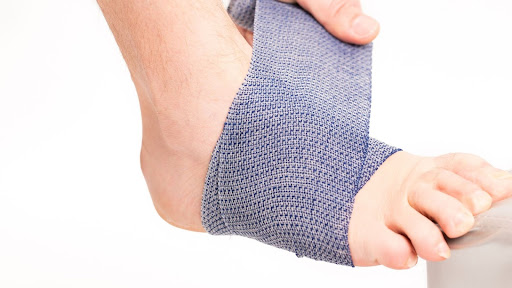The alternative guideline of Foot and Ankle Doctor
A podiatrist is a doctor who specializes in foot and ankle medicine and performs treatment of foot and ankle problems. If you are experiencing any foot or ankle problems, then you must consult with a Foot Specialist. A podiatrist gets medical training as well as specific foot, ankle, and lower leg training. They are also well-versed in biomechanics and appropriate foot balance, making them qualified to fit orthotics, custom shoes, and a range of braces. Podiatrists spend their entire careers studying medicine as it pertains to the feet.
When should you consult a podiatrist?
A podiatrist has a rising prevalence and significant detrimental impact on a patients’ quality of life, as musculoskeletal disorders of the foot and ankle are an important public health concern. For individuals with musculoskeletal problems of the foot and ankle, non-pharmacological methods are often employed as the first line of treatment. Based on the current information, this review summarizes the assessments and non-invasive treatment alternatives.
According to recent research, people with foot and ankle discomfort have several coexisting impairments in alignment, mobility, load distribution, and muscle performance, as seen in static and dynamic tests. In addition, clinical and epidemiological research shows that the foot and proximal joints are interdependent. So you should immediately look for a Podiatric specialist if you are facing any foot or ankle pain. Foot osteoarthritis is discomfort in the knee and hip that has been linked to abnormal foot anatomy. Advances in motion capture technology and plantar load distribution measurement have lately opened the door to more precise dynamic examinations of the foot and ankle.
Know the treatment goals with a Podiatrist
The main treatment goals for people with musculoskeletal problems of the foot and ankle are to relieve pain, restore mechanics, and return the patient to their preferred level of activity participation. A podiatrist will suggest a combination therapy that targets foot-specific and global impairments that have shown promising outcomes, given that most patients present with several deficits. Comprehensive rehabilitation strategies, such as early detection, foot-based therapies, and wellness-based physical activity and self-management approaches, are fundamental in people with rheumatoid arthritis and other rheumatic diseases.
How can you treat your ankle and foot pain?
While there have been tremendous advancements in assessing and treating foot and ankle diseases over the last decade, few randomized clinical studies have exclusively evaluated patients with foot and ankle conditions to provide worldwide insights into this domain. As a result, current recommendations by a podiatrist differ depending on the scope and strength of the studies given in this review. According to this review, more research on the components of diagnostic and treatment choices for foot and ankle musculoskeletal problems is needed.
However, foot and ankle issues may be linked, so the idea of regional interdependence was developed to address the overlap in musculoskeletal diseases of the foot and ankle in terms of examination and therapy. While this is not a systematic review of the research, it aims to provide a complete overview of common examinations and non-pharmacologic therapy options for foot and ankle discomfort.
How can a Podiatrist cure your foot and ankle pain?
The position of the medial longitudinal arch and the classification of foot kinds have been used to quantify foot structure. The predictive usefulness of arch alignment, on the other hand, is debatable, and objective evidence measuring the diagnostic accuracy of arch alignment is absent. Podiatrists use clinical radiological and foot-print-based procedures to determine arch alignment, with varying degrees of reliability and validity. Radiographic measurements of arch alignment are regarded as the “gold standard,” however they are subject to measuring mistakes due to magnification and beading.
Final thoughts
Acute ankle injuries, residual ankle impairment, and dysfunction are prevalent, leading to persistent ankle discomfort and mobility limits, as well as a “feeling of giving way.” Chronic ankle instability and concurrent osteochondral injuries are becoming more widely recognized risk factors for ankle discomfort and OA development. As a result, during the assessment, early detection and a high index of suspicion are required.
This makes it essential to consult a podiatrist for the treatment of foot and ankle. Ankle ROM, strength, and balance deficiencies are all known to increase the risk of falling in elderly people. Fall prevention and neuromuscular training should be emphasized in intervention techniques, in addition to pain management and gait retraining.
If you or someone you love is in need of podiatric treatment, visit our website or call (480) 717-5011) to schedule your appointment.


